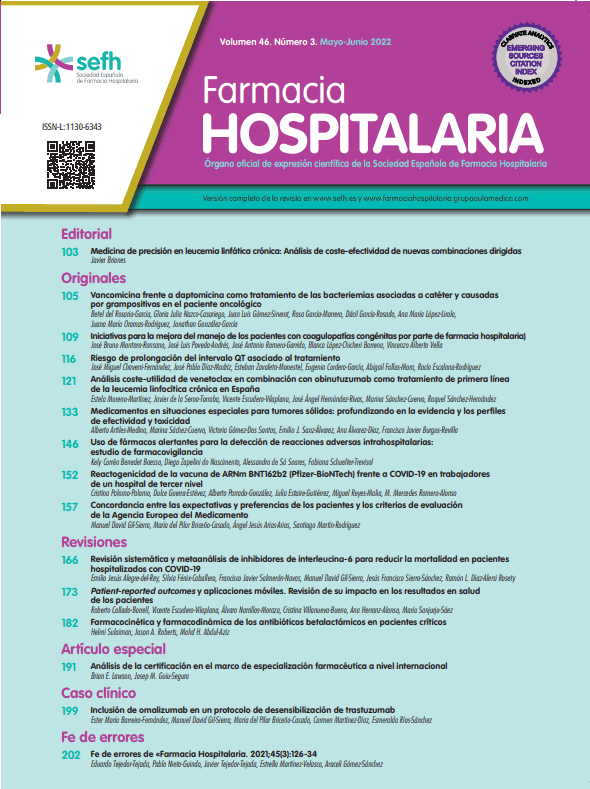To evaluate antiretroviral treatment adherence in the HIV patient cohort of our hospital and observe their evolution over a 9-year period, and to determine the individual pattern of adherence over time.
MethodsDescriptive study of the evolution of average annual adherence and the annual percentage of adherent patients greater than 95% from 2000 to 2008. We analysed the individual pattern of adherence over time and patients were classified as ‘consistently adherent’, ‘consistently non-adherent’, and ‘fluctuating’.
ResultsIn the analysis of 577 patients, baseline adherence was significantly greater in naïve patients compared to those who were pre-treated.
Average annual adherence increased slightly and stayed at values around 95%. As with the percentage of patients with adherence greater than 95%, which increased from 64% in 2000 to 79% in 2008.
In terms of the individual pattern of adherence over time, of the 468 patients analysed, the majority (59%) were consistently adherent, 4% non-adherent, and the rest (37%) fluctuated in their adherence.
ConclusionsIn our cohort, the overall adherence values remained steady over time and even show a positive trend, which is likely to be the result of systematic monitoring of adherence and implementation strategies to maintain adherence.
Evaluar la adherencia al tratamiento antirretroviral en la cohorte de pacientes VIH de nuestro hospital y ver su evolución a lo largo de 9 años, así como conocer el patrón individual de la adherencia con el tiempo.
MétodosEstudio descriptivo de la evolución de la adherencia media anual y el porcentaje anual de pacientes con adherencias superiores al 95%, desde el 2000 al 2008. Se analizó el patrón individual de adherencia con el tiempo y se clasificó a los pacientes en adherentes consistentes, no adherentes consistentes y fluctuantes.
ResultadosEn el análisis de 577 pacientes, la adherencia basal fue significativamente mayor en los pacientes naive respecto a los pretratados.
La adherencia media anual aumentó ligeramente y se mantuvo en valores cercanos al 95%, al igual que el porcentaje de pacientes con adherencia superior al 95%, que aumentó desde el 64% en el 2000 al 79% en 2008.
En cuanto al patrón individual de adherencia con el tiempo, de los 468 pacientes analizados, la mayoría (59%) fueron adherentes consistentes, un 4% no adherente y el resto (37%) presentaban fluctuaciones en su adherencia.
ConclusionesEn nuestra cohorte los valores de adherencia global se mantienen con el tiempo e incluso presentan una tendencia positiva, resultado de una monitorización sistemática de la adherencia e implantación de estrategias dirigidas a mantener la adherencia.
This study was presented as an Oral Communication, number CT4, in the 5th Sei Norte Conference, held in San Sebastian from 7–9 May 2009.






